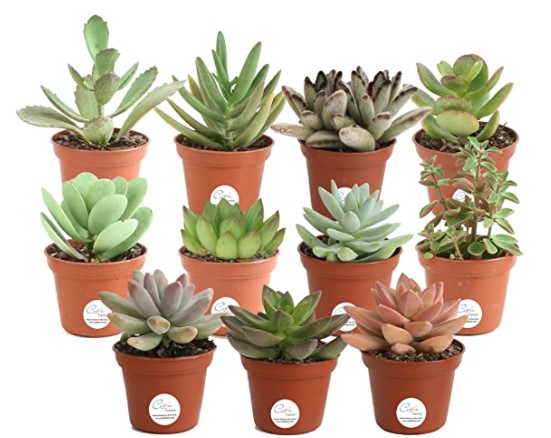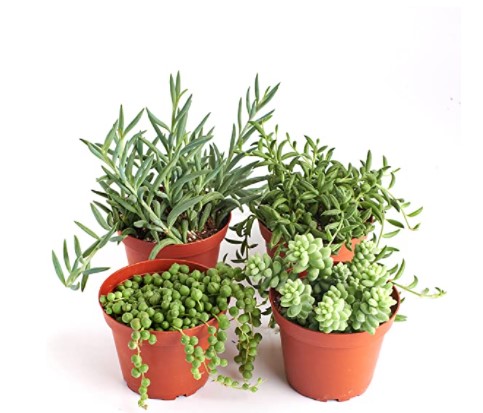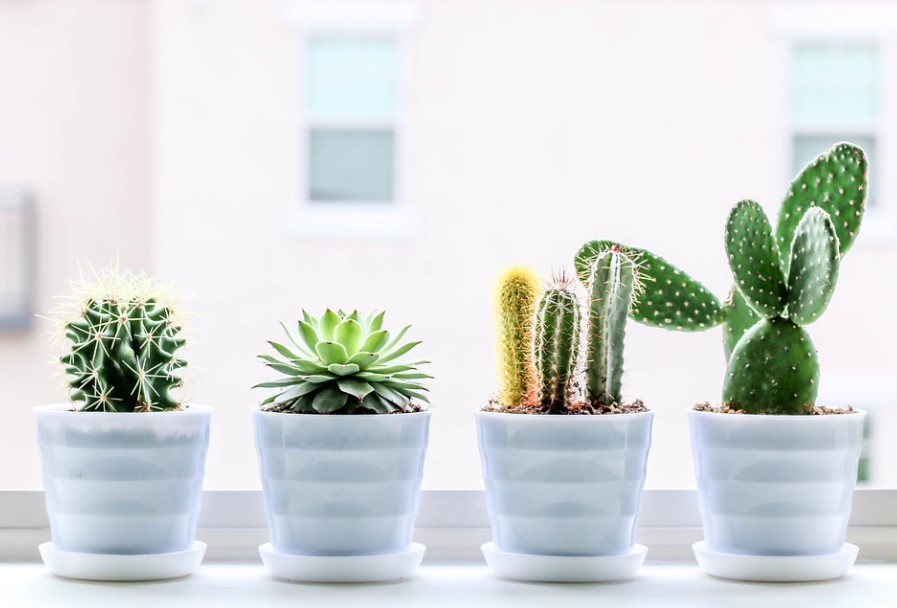Are you the proud owner of succulent plants, or are perhaps thinking about getting yourself a few of these amazing plants? If so, then you are in the right place. If you are a succulent lover then you are probably aware that your plant needs care and attention. If you’ve ever wondered, how often do you water succulents, you are in luck as we’ll be sharing with you everything about the matter.
Having succulents in your home is a great idea as they can be beneficial for your health, and they require minimal attention. According to research, these plants are extra helpful in library and study environments because they are excellent at cleansing the air and removing toxins.
Whether you are a new or an old succulent owner, you need to provide the specific care your plant needs, which includes knowing how often do you water succulents. If you’ve ever found yourself in the case of your succulent dying, knowing when and how you should water them, is essential for the preservation of your plant. Keep reading and learn about, how often do you water succulents.
How Often Do You Water Succulents FAQ’s
Why you should have succulents at home?
- They help you breathe: Succulents, keep producing oxygen all through the night. Keep these plants in the bedroom for an extra boost of refreshed air during your sleep that ultimately leads to a better night’s sleep.
- They purify the air: Succulents, like snake plants and aloe vera, which is a kind of Spike Plant, are excellent at cleansing the air and removing toxins. NASA’s research found that they are able of removing 87 percent of volatile organic compounds.
- They help prevent diseases: About 10 percent of the moisture in the atmosphere is water released by plants. The same applies to your home, the more plants you have, especially in groupings, the better you can improve the humidity in your home that can prevent dry skin, colds, sore throat, and dry cough.
- They help you focus: A number of studies of both students and workers have found that concentration, attentiveness, and brain capabilities improve when studying or working with plants in the room.
- They aid in quicker recovery: Succulents can contribute to reducing flu-like symptoms, headaches, fever, and coughs. According to researchers, hospital patients with plants in their rooms required less pain medication.
What are the two categories of succulents?
Most succulents belong to one of two categories: Summer growers (winter dormant) and winter growers (summer dormant). Summer growers are succulents that grow actively in the summer months from May to August and become dormant in the winter months from November to February. On the other hand, winter growers are succulents that grow actively in the winter months from November to February and become dormant in the summer.
Live Indoor Plant
Because succulents come in an amazing array of shapes, sizes, and colors they are super fun to mix and match in your favorite container.
Think live succulents for your table settings this holiday season! They’re perfect décor and parting gifts for your guests.
Because succulents hate wet soil look for a mix that incorporates perlite or sand to facilitate drainage. Make a hole in the center of the container and drop in your tallest succulent.

Features:
- Drought Tolerant
- Spring to Summer
- Full Sun
Unique Trailing, Fully Rooted Live Indoor Succulent
Whether you’re starting a garden, a DIY project, need wedding favors or are simply looking for beautiful decor these plants can help you achieve your goal.
These succulent terrariums are carefully designed to enhance any room, event, or outdoor area. They’re also wonderful gifts and activities for children.
Fertilize every two to four weeks during spring and summer Withhold fertilizer during the fall and winter months. Use potting soil with extra drainage. These plants love moderate temperatures and bright indirect light.

Features:
- Winter
- Sandy Soil
How often do you water indoor succulents?
Indoor succulent plants should likely be watered approximately once a week. They need enough time to store the water in their leaves and for the soil to dry out between waterings. Follow these tips and techniques for watering indoor succulent plants. Use a watering with a small pour spout.
Do succulents need direct sunlight?
Succulents love the direct sun, but if yours is sitting in the same exact spot day after day, it’s likely that only one side is getting enough light. Succulents will lean towards the sun, so rotating them will help them stand up straight.
How do you know when a succulent needs water?
Wrinkled, shriveled leaves are a clear indication that your Succulent needs more water. As the cells release their stored moisture to the rest of the plant, they try to bring in more water to replace what they have lost.
How much water do succulents need each day?
Succulents should be watered only when the soil has dried out completely. There is no universal watering schedule that works for every succulent in every climate. Many indoor succulent growers find that watering for 14-21 days is a good frequency to keep their succulents alive.
Can a succulent come back from overwatering?
The answer is affirmative. If you lost a lot of leaves from overwatering, the plant will eventually recover as long as it is not rotting. When given a chance to dry out, you will soon notice a new growth or tiny leaves along the stems. You will also notice new growth from the sides, the top, or even the bottom of the plant.
Why do my indoor succulents keep dying?
The reason for a succulent dying is most often because of root rot due to overwatering and slow draining soils. Succulents are drought-resistant plants that require the soil to dry out between watering. Brown, yellow, or black mushy leaves indicate the succulent is dying because the soil is too damp.
Do succulents clean the air?
Succulents, and a few other plants like orchids and areca palms, keep producing oxygen all through the night. They purify the air. Like snake plants and aloe vera, Succulents are excellent at cleansing the air and removing toxins.
What factors affect how often you need to water succulents?
Season
They pull water out of the soil at a remarkable rate as they make new stems, leaves, roots, and blooms. You may water them three times a week, depending on conditions like light and temperature. In the winter, succulents go dormant. Growing stops, so you’ll only need to water them once or twice for the entire season.
Container Size
Larger containers need to be watered less often because they have more soil that holds moisture longer. Small, shallow containers will need to be watered more frequently because the soil dries out faster.
Amount of Light
Succulents that get 10 or more hours of full sun will need more water than success that get less light. Generally, outdoor plants will need more water than indoor ones because they get more sun and are exposed to tougher conditions.
Humidity
Plants in high humidity and cooler temperatures will need less frequent watering than plants in hot, dry climates because they’ll maintain moisture for a longer period of time.
Tips on how to water your succulent:
- Succulents are desert natives, and while they don’t get much rainfall in their ancestral habitats when it does rain, it pours. Desert rainstorms are monsoons, with water coming out of the sky in sheets. Imitate desert rain for your succulent by drenching it when you water it.
- Pour water on it slowly and don’t stop until water runs out of the drain hole in the bottom. Succulents do better with periodic long, deep drinks that soak their soil to the bottom of the pot than regular but timid waterings that wet the top inch or two of the soil in the container.
- So when your succulents’ soil is bone dry, drench that baby. Let the soil dry out completely, then drench again. Dry out. Drench. Dry out. Drench. Follow that pattern and you’ll have perfectly watered succulents.
How Often Do You Water Succulents
Soak and Dry Method
- Water your succulents at least once a week during their growing phase.
- Fully soak the soil, until water runs out of the drainage holes of the pots.
- Make sure that the soil is completely dry before you water it the next time.
- To make sure that the soil is completely dry, stick a bamboo stick all the way into the soil. Wait a few minutes, and pull the stick out. If the stick is damp with soil stuck on it, the soil is not completely dry.
- If the stick comes out easily and dry, then the soil is completely dry and you can proceed to water your succulents.
- When your succulents enter their dormancy phase, increase the interval between watering. The common idea is that succulents should be given just enough water so that they show no sign of shriveling.
- Succulents should only be watered from the bottom, i.e. directly on the soil.
Succulents in Containers
- Water the base of the succulent plant until the soil is fully saturated.
- Allow water to drain through the holes in the pot thoroughly. If there is a collection plate underneath the plant, be sure to dump out any water that drains through the soil.
- Allow soil to dry thoroughly between waterings.
- If heavy rain is imminent, move pots to a sheltered location.
How Often Do You Water Succulents In-Ground
- Reduce watering during the fall and winter months so that succulents can survive cold temperatures.
- Saturated soil makes succulents more vulnerable to frost damage during the winter months.
- During the hotter days of the growing season, plants will need more frequent watering.
- Water plants deeply, allowing the soil to dry between watering sessions.
Would you be interested in knowing How Often Do You Water A Christmas Cactus?



